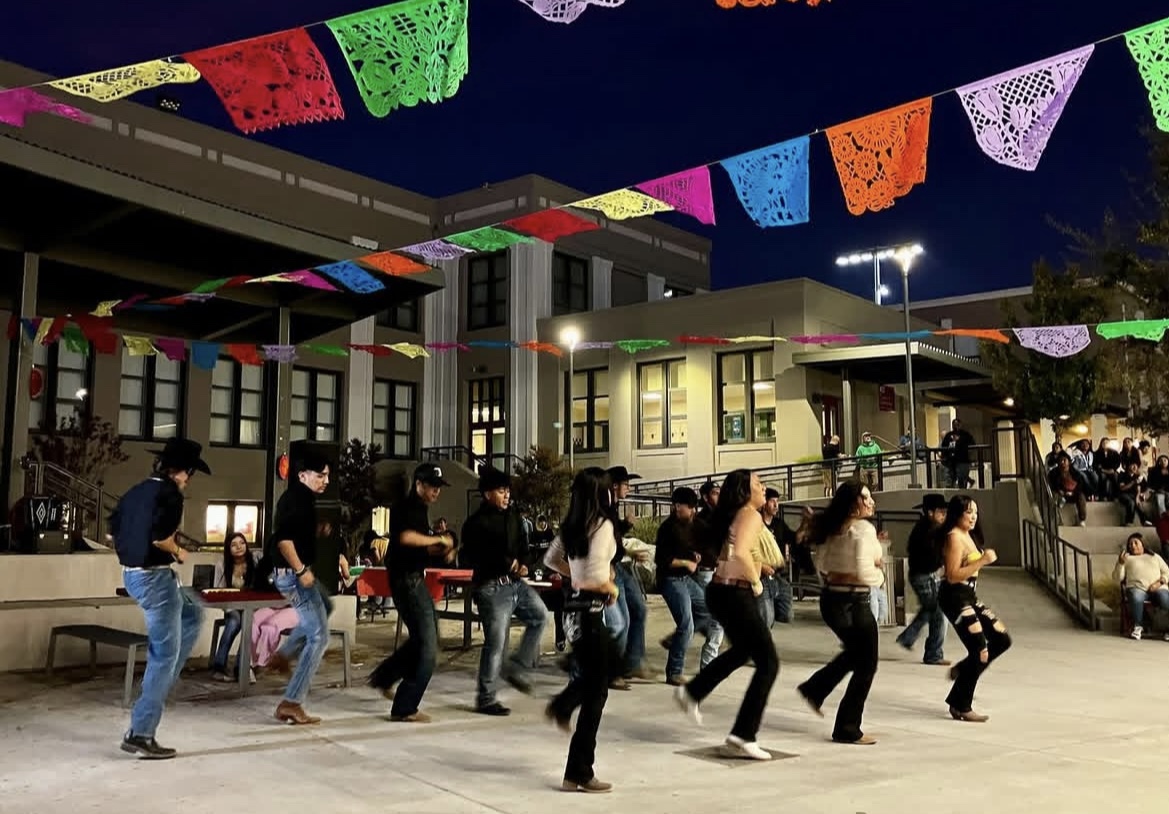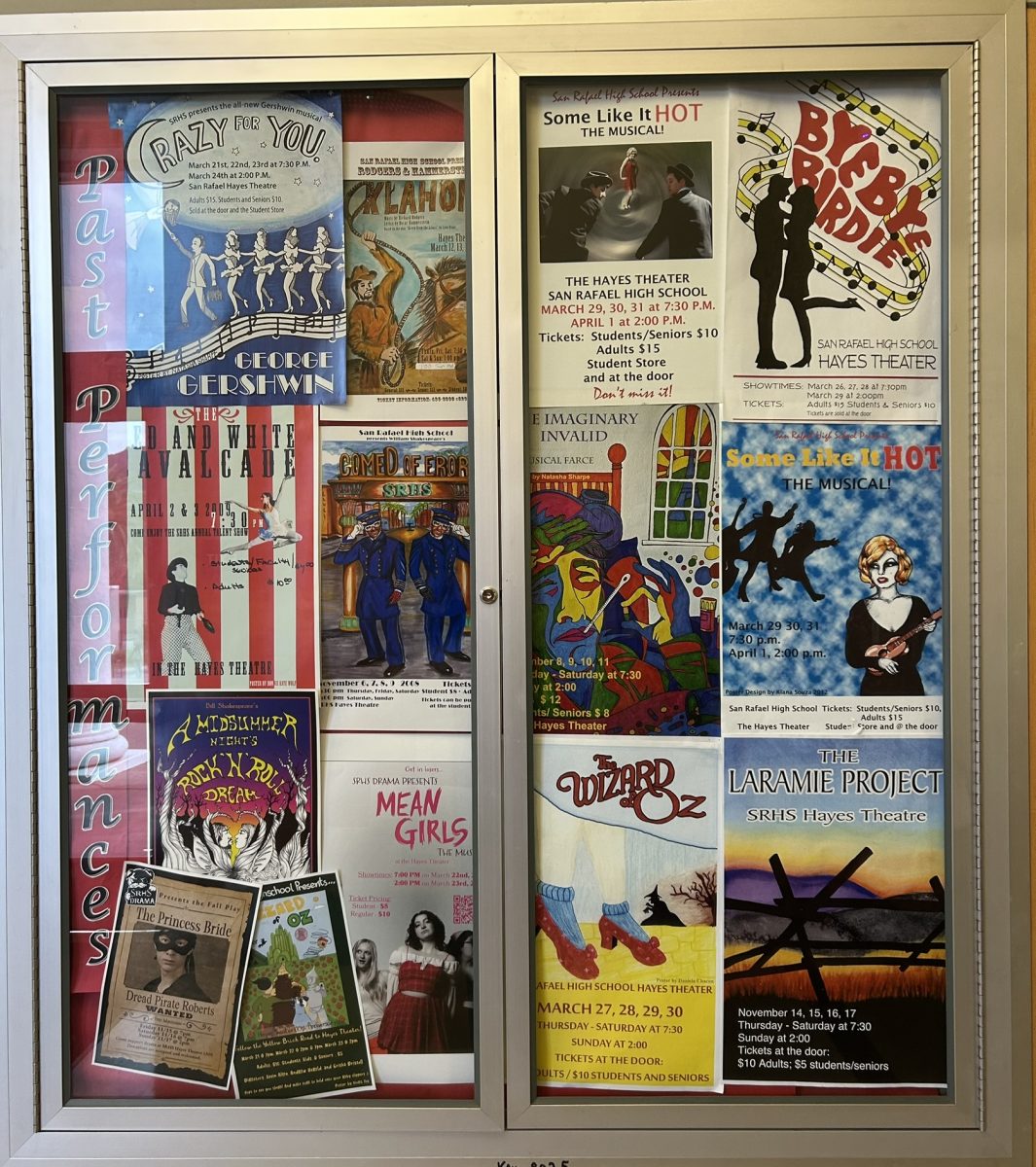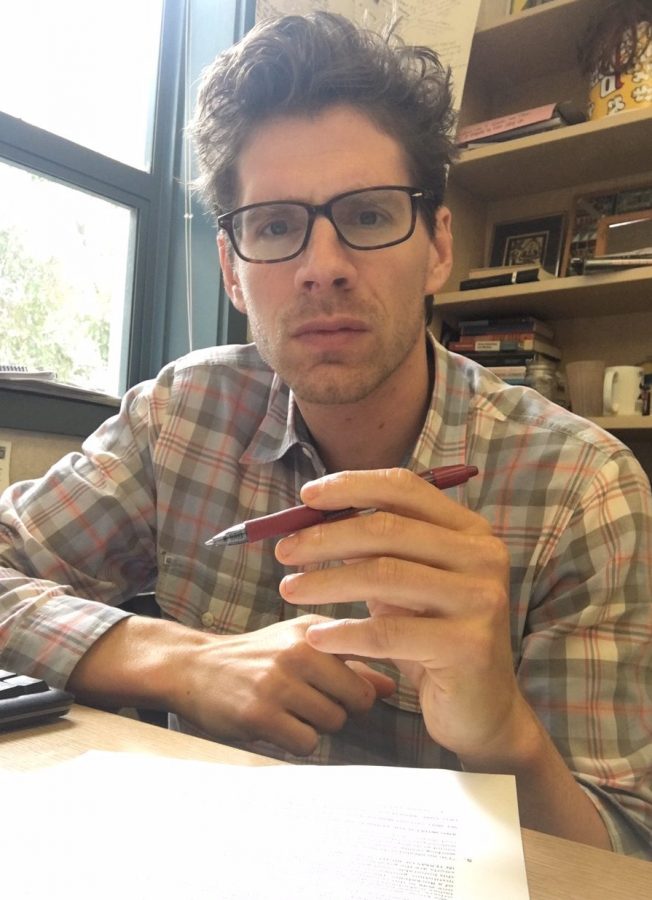Luisa Vance Interprets Culture as Well as Language
November 22, 2021
To an extent, every staff member that deals with students and parents is reliant on Ms. Vance to navigate through our community. The amount of time she has committed to building connections and trust with San Rafael’s community proves valuable to a school like ours with an ethnic population that is predominantly Latino (66%).
Ms. Toy, SRHS psychologist, said, “Ms. Vance is absolutely essential and critical to everything that I do.” Ms. Toy has worked with families and students who only speak indigenous languages. This means that they’re new to English as well as to the entire school system. However, she said Ms. Vance makes the whole process calm and positive where it feels like the family and the school are working together. She continues, “The way that she takes those kids right under her wing, and makes sure that their needs are being met, is just tremendous… she’s right in the middle of that conversation. Not just like a language interpreter but also a cultural interpreter.”
Ms. Zampino, the SRHS lead counselor, said, “As a monolingual English speaker, it is tricky for me to communicate with students and families.” She continued to say that she can’t easily communicate with Latino students and parents on phone calls due to the language barrier she faces, which is why she relies so much on her. She can’t organically pick up the phone and dial up the parent she wants to talk with because some Latino parents may not speak English. “I rely on her for so much.” They have been working together for three years now and have a system worked out where she can just walk up to Ms. Vance and say ‘hey can we talk with this parent?’ and in a while, Ms. Vance would signal her to come to her office.
“It’s never a short visit when I’m in her office, we talk with several families in a single meeting,” she said. When she and Ms. Vance are talking with a family she will remember their family history, where they work, their siblings and cousins, and how long they’ve lived in San Rafael. This is because she has created ties with many of San Rafael’s families due to her long time of working with the community. This information is invaluable to counselors in understanding the context of their students to aid them and make sure their needs have been met.
Ms. Luisa Vance was born in 1984 in Medellin, Colombia. During the late 1980s and early 1990s, her country was the most violent place in the entire world. In the first seven months of 1989, it had homicide rates reaching up to “60 homicide victims a day.”This was during the time Pablo Escobar was active, and even after his death in 1993, the murder rates did not falter; rather, they tripled due to an increase in police brutality in order to crack down on gangs and remaining cartels.
“A lot of my classmates were important people, and by important people, I mean criminals,” she said. “I remember my classmates were killed by the cartel members in school.” This was the period where she decided she would work as a human rights activist and for social justice in Colombia. Ms. Vance describes Colombia as a “violent yet beautiful country,” referring to the “kind and caring” people she met there. She never had an inkling that she’d become a community liaison, however, from the beginning in her hometown, she has worked to build connections with her community. In June of 2021, Ms. Vance had a family emergency in Colombia, she invited Ms. Toy to come and visit her family. She remembers meeting so many family members and hundreds of neighbors of Ms. Vance. Ms. Toy said, “She’s a central figure in her community back home as well as in San Rafael. Her spirit is evident everywhere she goes.”
Ms. Vance went to the National University of Colombia to study Political Science. “My university is the best!” she proclaimed during the interview. At this university, she was involved in the student rights movement. This laid the foundation for her interest in social justice, which she still has a passion for working as a community liaison for San Rafael.
When she was a student, she had no idea that she’d be doing the work that she’s doing now. “I had never imagined I would leave Colombia, I wanted to keep working as a human rights activist.” However, when the opportunity presented itself 24-year-old Ms. Vance traveled to the United States. The first job she ever held in the US was at Davidson Middle School as a Community Liaison. She worked there for five years before transferring to San Rafael.
Her duties at San Rafael include acting as the link between the community and the school system, teachers, and administrators. “I work with Latino families that oftentimes don’t speak English and are new to all this,” she said, gesturing with her hands towards the new STEAM building construction going on outside her office window and the numerous neatly organized green folders beside her desk.
In the corner of Ms. Vance’s office, leaning on the floor on top of a red Bulldog plushie, is Yanelly Gomez Sarat, a senior and the SELAC student president. She is usually around the administration office to meet with Mr. Peck and Ms. Vace to talk about SELAC meetings and any reforms that were mentioned. The first time she ever met Ms. Vance was on the first day of her job. Sarat said, “We immediately had a connection. For me, communicating with her has always been very easy.” She describes her as a “person of responsibility” since many students and families who don’t speak English and staff who don’t speak Spanish are dependent on her.
The School English Learner Advisory Committee is a group comprised of parents, teachers, and school staff. This committee is meant to inform parents about the school’s ELD program and any other programs. It functions as an advisory group in the school’s governance process, similar to the School Site Council or School Leadership Team. This committee consists of elected officers and is responsible for protecting the rights of our community’s English learner population.
According to Sarat, Ms. Vance acts as the translator during these meetings. Given the majority of EL students’ parents not being able to speak English, she plays a major role in interpreting and relaying that information to Mr. Peck and other school staff during the meetings to make sure their voices are acknowledged and understood.
Currently, half of Ms. Vance’s time is spent on the phone with parents, talking about student attendance or explaining to them the COVID restrictions, county guidelines, and policies. She says that it gets “really crazy and it’s a lot of work that has to be done in 40 hours a week.” Our school has been approved for a second liaison, but according to her, the school administration is “still working on that.”
Ms. Zampino agrees with her, “As educators, we are working harder than we have ever worked before, I’ve never seen our staff so stressed and tired as we are now.” This increase in workload can be seen throughout the school due to stress from the pandemic and an increase in guidelines and restrictions to be followed.
If Ms. Vance had more time, she would like to work directly with newcomers, English learners, and SELAC parents. Back in Davidson Middle School, she had a dance club where students would meet, “not so much to dance; that was just an excuse.” Her dance club served as an environment for students to build a community and create a space where they felt comfortable connecting with each other.
Ms. Vance says that the best part of her job is the “wonderful” staff and students she gets to work with. Ms. Toy describes her as a person with “the biggest heart,” all her co-workers couldn’t agree more. Her passion for social justice is still evident in the work she does for our community of English learners and newcomers to ensure student success.






































